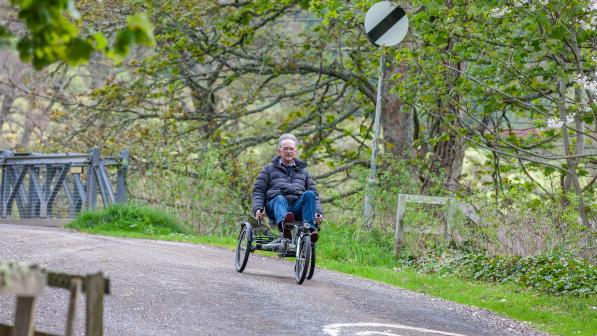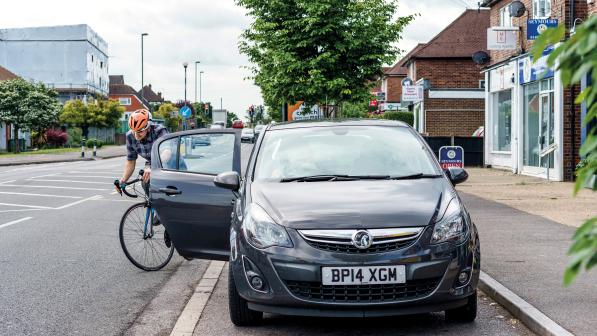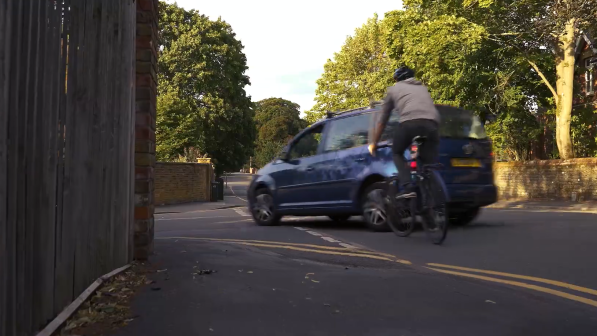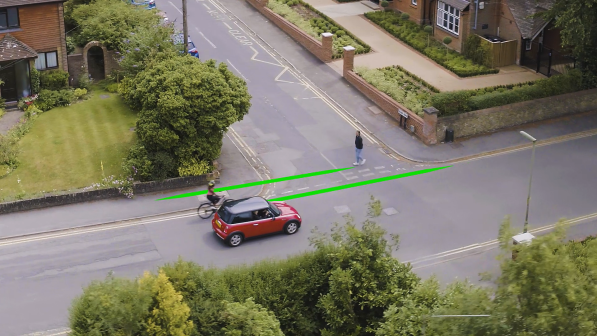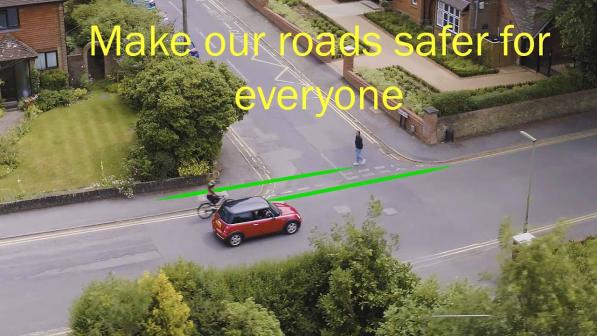Casualty statistics highlight the cost of failing to pay attention, says Cycling UK

- ‘Driver or rider failed to look properly’ is the most common contributory factor recorded in reported road crashes, accounting for about 40% of factors assigned by police at the scene
- In 2019, 374 people were killed and almost 40,000 injured in collisions in which failure to look properly was a contributory factor
- For drivers of large vehicles, the consequences of inattention are greater for others, so these road users should bear greater responsibility for their actions
Cycling UK, the national cycling charity, is highlighting the importance of road users being vigilant, following the publication of official annual road casualty statistics for 2019 by the Department for Transport (DfT).
While overall road deaths fell slightly year on year, from 1,784 in 2018 to 1,752 in 2019, the detailed statistics show that vulnerable road users such as cyclists and pedestrians can be disproportionately affected by lack of attention.
In incidents where at least one contributory factor was reported, “driver/rider failed to look properly” contributed to the deaths of 40% of cyclists killed in 2019, and 58% of cyclist casualties overall. For car occupants, these figures were 17% of deaths and 35% of casualties. Across all road users, 374 deaths involved failure to look as a contributory factor.
A further 10% of cyclist deaths, where a contributory factor was identified, involved drivers passing “too close to cyclist, horse rider or pedestrian”, and the same number involved “poor turn or manoeuvre”.
The statistics also show that two-thirds of cyclists (66%) and more than half of pedestrians (55%) killed or seriously injured (KSI) in 2019 were involved in incidents at or within 20 metres of a junction. For car occupants, the proportion was 41%, showing that more vulnerable road users are at proportionally greater risk near junctions.
Failing to look properly, or at all, isn’t something that’s unique to people walking, cycling or driving, but the potential consequences for other road users of neglecting to do so are much greater if you’re driving a larger vehicle
Duncan Dollimore, Cycling UK head of campaigns
Duncan Dollimore, Cycling UK’s head of campaigns, said: “Failing to look properly, or at all, isn’t something that’s unique to people walking, cycling or driving, but the potential consequences for other road users of neglecting to do so are much greater if you’re driving a larger vehicle.
"That’s why Cycling UK supports proposed changes to the Highway Code to introduce a hierarchy of responsibility, putting road users most at risk in the event of a collision at the top of the hierarchy with those in charge of the largest vehicles, with the potential to cause the most harm in a collision, bearing the greatest responsibility to take care and reduce the danger they pose to others.
"This wouldn’t remove the need for all users to behave responsibly, but with failure to look properly accounting for 40% of all contributory factors in injury collisions, and implicated in 374 deaths last year alone, it’s vital that the Highway Code makes it clear that the greater risk you pose to others, the greater responsibility you bear on the roads.”
The government is consulting on the review of the Highway Code, with responses accepted until 27 October, and Cycling UK has outlined 10 key changes that would make the roads safer for cyclists. These include:
- A ‘hierarchy of responsibility’, putting road users most at risk in the event of a collision at the top of the hierarchy. It would mean that people in charge of the largest vehicles, with the potential to cause the most harm in a collision, would bear the greatest responsibility to take care and reduce the danger they pose to others. So, a lorry driver would have a greater responsibility to those driving a car or motorcycle, and likewise people cycling would have a greater responsibility than pedestrians.
- Changes to junction priority, introducing an underlying principle that vehicles turning at unsignalised junctions should give way to pedestrians or cyclists going straight ahead across their path, unless traffic signs, signals or markings say otherwise.
- Specifying a minimum distance to leave when overtaking cyclists, of 1.5 metres at speeds under 30mph, and 2.0 metres at speeds over 30mph.
- Using the ‘Dutch Reach’ when opening a door: using, say, the left hand to open the right-hand door. This makes you turn your head to look over your shoulder before opening the door, and should reduce the number of cyclists injured when someone opens a car door without looking.
Cycling UK has created an online action form where people can highlight the most important Highway Code changes and have their say in the consultation.
Further information
Please contact the national Cycling UK press office. Due to the restrictions caused by the coronavirus outbreak, currently the main press office number (01483 238 315) is not being monitored. If you would like to speak to a member of the press office during working hours (0900 - 1700) please call Rob Kingston on 07880 424 912 or email [email protected]. Out of hours, call 07786 320 713.
Notes to editors
- Cycling UK, the national cycling charity, inspires and helps people to cycle and keep cycling, whatever kind of cycling they do or would like to do. More than a century’s experience tells us that cycling is more than useful transport; it makes you feel good, gives you a sense of freedom and creates a better environment for everyone. www.cyclinguk.org
- Full road casualty statistics for 2019 are available at https://www.gov.uk/government/collections/road-accidents-and-safety-statistics.
- Contributory factors (CF) reported in these statistics are those identified by police officers attending the scene as likely to have contributed to a collision. The reporting system does not indicate blame.
- The consultation on the review to the Highway Code, including introducing a hierarchy of responsibility, is open until 27 October. For more information, see https://bit.ly/36nsugR
